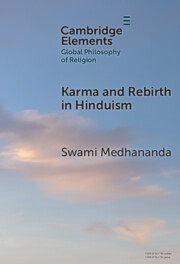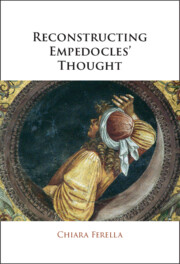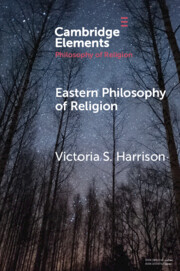Refine search
Actions for selected content:
17 results

Karma and Rebirth in Hinduism
-
- Published online:
- 08 August 2025
- Print publication:
- 21 August 2025
-
- Element
- Export citation
Chapter 7 - Cosmic Cycle, Moral Import and Rebirth
-
- Book:
- Reconstructing Empedocles' Thought
- Published online:
- 01 February 2024
- Print publication:
- 08 February 2024, pp 307-362
-
- Chapter
- Export citation
Chapter 5 - Changes of Form, Personal Survival and Rebirth
-
- Book:
- Reconstructing Empedocles' Thought
- Published online:
- 01 February 2024
- Print publication:
- 08 February 2024, pp 217-245
-
- Chapter
- Export citation
Chapter 8 - Epilogue
-
- Book:
- Reconstructing Empedocles' Thought
- Published online:
- 01 February 2024
- Print publication:
- 08 February 2024, pp 363-371
-
- Chapter
- Export citation
Chapter 2 - The Proem to On Nature
-
- Book:
- Reconstructing Empedocles' Thought
- Published online:
- 01 February 2024
- Print publication:
- 08 February 2024, pp 62-137
-
- Chapter
- Export citation
Chapter 3 - Daimones between Plato and Pythagoras
-
- Book:
- Reconstructing Empedocles' Thought
- Published online:
- 01 February 2024
- Print publication:
- 08 February 2024, pp 138-184
-
- Chapter
- Export citation

Reconstructing Empedocles' Thought
-
- Published online:
- 01 February 2024
- Print publication:
- 08 February 2024
5 - Kamma, Samsara, and Rebirth
- from Part II - Details of the Dhamma
-
- Book:
- An Introduction to Buddhist Philosophy
- Published online:
- 07 October 2023
- Print publication:
- 12 October 2023, pp 83-103
-
- Chapter
- Export citation
7 - Impermanence, No-Enduring-Self, and Emptiness
- from Part II - Details of the Dhamma
-
- Book:
- An Introduction to Buddhist Philosophy
- Published online:
- 07 October 2023
- Print publication:
- 12 October 2023, pp 124-147
-
- Chapter
- Export citation
Chapter 4 - Death: The Hole That Gapes for All
-
- Book:
- Lucretius and the End of Masculinity
- Published online:
- 11 May 2023
- Print publication:
- 25 May 2023, pp 83-119
-
- Chapter
- Export citation

Eastern Philosophy of Religion
-
- Published online:
- 12 September 2022
- Print publication:
- 06 October 2022
-
- Element
- Export citation
8 - Becoming Alive
-
- Book:
- Hermetic Spirituality and the Historical Imagination
- Published online:
- 16 June 2022
- Print publication:
- 30 June 2022, pp 220-263
-
- Chapter
- Export citation
An Integral Advaitic theodicy of spiritual evolution: karma, rebirth, universal salvation, and mystical panentheism
-
- Journal:
- Religious Studies / Volume 59 / Issue S1 / December 2023
- Published online by Cambridge University Press:
- 23 March 2022, pp. S67-S81
- Print publication:
- December 2023
-
- Article
-
- You have access
- Open access
- HTML
- Export citation
Chapter 7 - Rebirth and the Buddhist Unborn in the Fiction and Drama
-
- Book:
- Beckett and Buddhism
- Published online:
- 08 July 2021
- Print publication:
- 22 July 2021, pp 161-190
-
- Chapter
- Export citation
Chapter 2 - East–West Dialogue via Schopenhauer
-
- Book:
- Beckett and Buddhism
- Published online:
- 08 July 2021
- Print publication:
- 22 July 2021, pp 38-63
-
- Chapter
- Export citation
4 - Blood after the Last Supper
- from Part II - Blood Seeps in Where It Hardly Seems to Belong
-
- Book:
- Blood Theology
- Published online:
- 22 March 2021
- Print publication:
- 25 March 2021, pp 83-114
-
- Chapter
- Export citation
3 - Denial of Death
-
- Book:
- Religion and the Meaning of Life
- Published online:
- 23 March 2020
- Print publication:
- 09 April 2020, pp 42-55
-
- Chapter
- Export citation
